Learn English
Learn English Better: How to Organize Your Notes Effectively
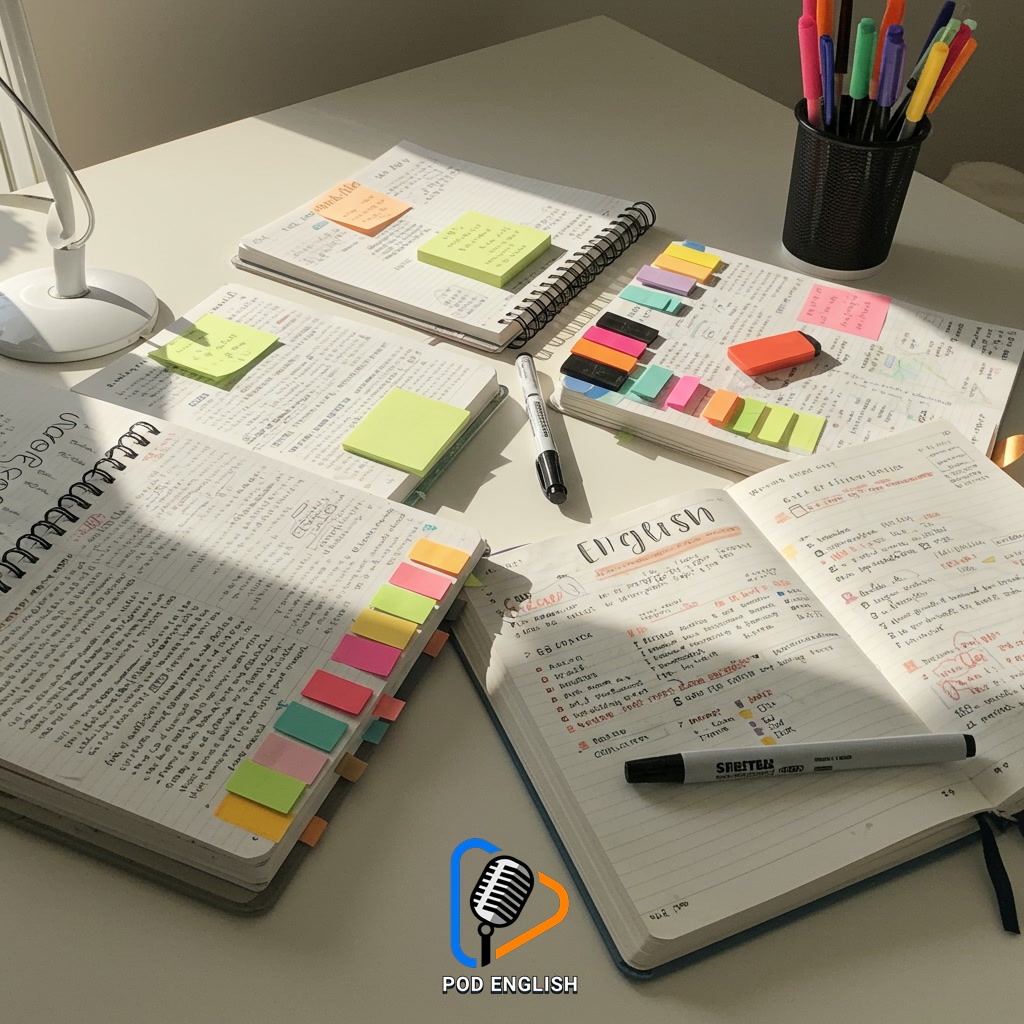
This content explores strategies for enhancing your English language acquisition. It focuses specifically on practical methods for organizing your study notes. By implementing effective note-taking techniques, learners can improve retention and comprehension. The aim is to help you make your English learning process more efficient and successful.
Table of Contents
- Section 1: Why Effective Note-Taking is Crucial for Learning English
- Section 2: Identifying What to Note Down When Learning English
- Section 3: Exploring Different Note-Taking Methods
- Section 4: Practical Strategies for Organizing Your English Notes
- Section 5: Leveraging Your Notes for Active Learning and Review
- Section 6: Integrating Note-Taking into Your Daily Study Routine
Section 1: Why Effective Note-Taking is Crucial for Learning English
Effective note-taking isn’t just about writing things down; it’s a powerful tool that significantly impacts your English learning journey. When you take notes actively, you engage with the material more deeply, which helps your brain process and retain new vocabulary, grammar rules, and concepts more effectively. Organized notes serve as a personalized reference library, making it easy to review and revisit challenging topics. This structured approach prevents information overload and confusion, allowing you to see connections between different parts of the language. Ultimately, good notes make your study sessions more efficient, boost your comprehension, and build confidence as you track your progress, making the learning process less daunting and more rewarding.
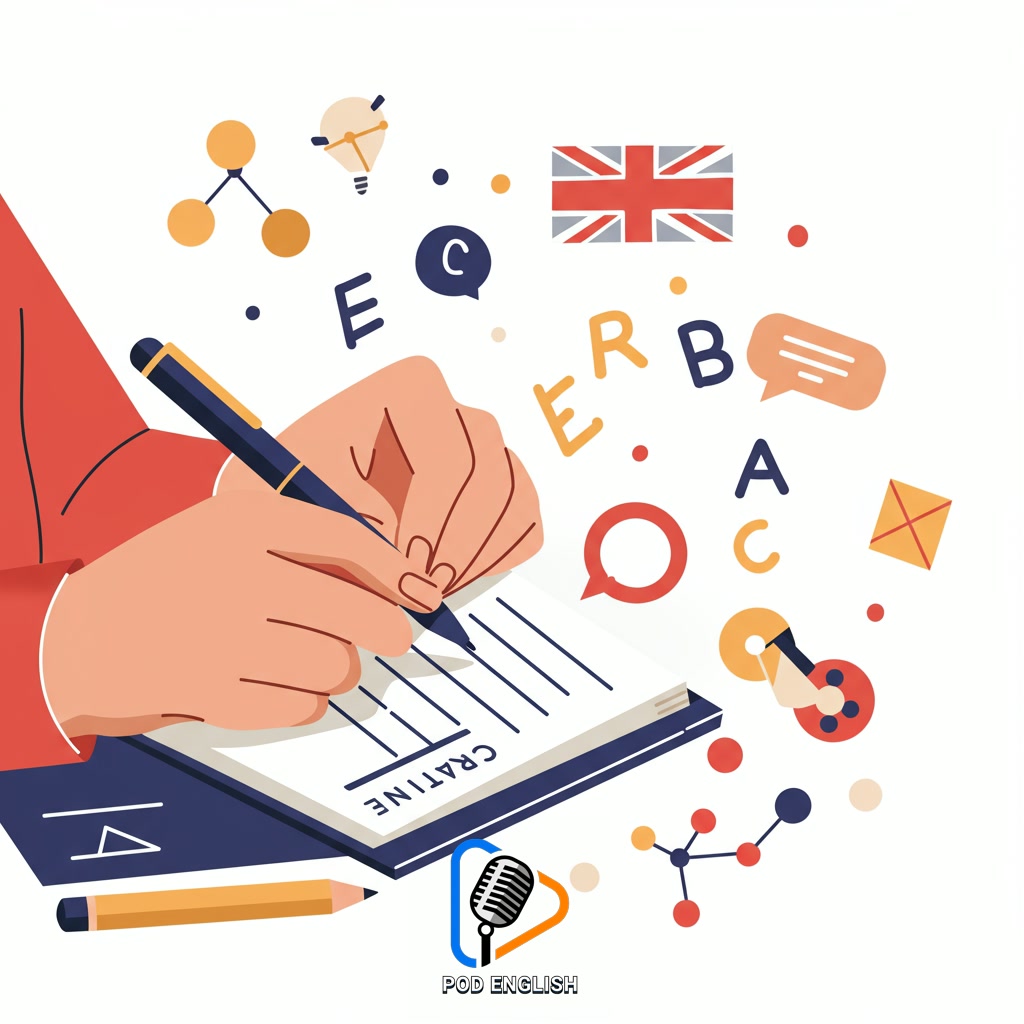
Why Effective Note-Taking is Crucial for Learning English
Section 2: Identifying What to Note Down When Learning English
Building on the importance of note-taking, the next crucial step is knowing *what* specifically to record. When learning English, focus on capturing key elements you encounter. This includes new vocabulary – not just single words, but also phrases, idioms, and collocations, perhaps noting example sentences. Grammar points are essential; write down rules and illustrative examples. Don’t forget pronunciation notes for tricky sounds or words. Also, make a note of common errors you make or hear, and useful expressions you want to start using. By strategically selecting and recording these specific types of information, your notes become a powerful, personalized reference guide for reviewing and practicing what you’ve learned. This targeted approach ensures your notes are efficient and directly support your learning goals.

Identifying What to Note Down When Learning English
Section 3: Exploring Different Note-Taking Methods
Building on understanding *what* to note, the next crucial step is exploring *how* to structure your notes effectively. Different note-taking methods suit different learning styles and types of information. Linear notes, simply writing down points sequentially, are straightforward but can lack visual organization. The Cornell method offers a structured approach with dedicated sections for main notes, cues for recall, and a summary area, which is excellent for reviewing grammar rules or complex concepts. Mind mapping, using a central idea with branching connections, is ideal for visualizing vocabulary themes or relationships between grammar points. You might also explore sketchnoting, which integrates simple drawings and visual elements to make notes more engaging and memorable. Experimenting with these various methods will help you discover the most efficient way to organize your English study materials for better comprehension and recall.
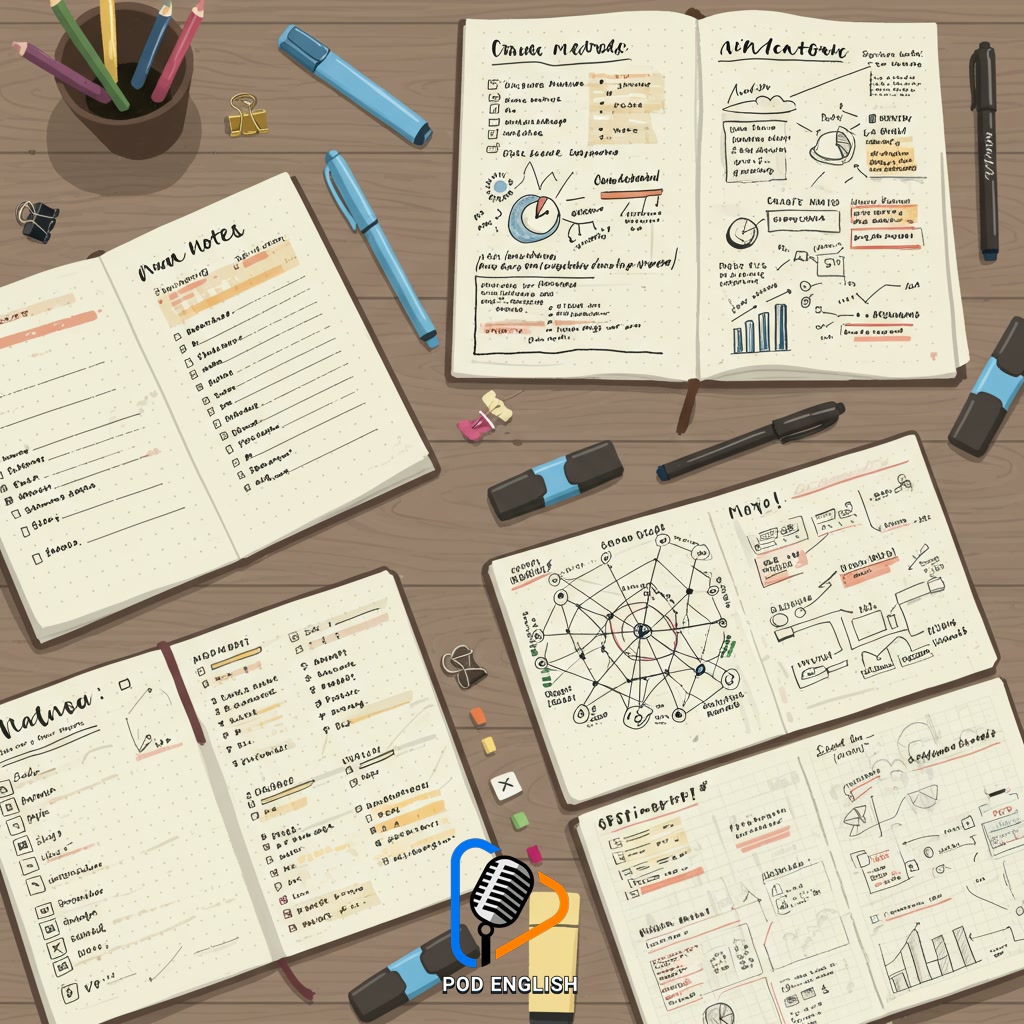
Exploring Different Note-Taking Methods
Section 4: Practical Strategies for Organizing Your English Notes
Moving from understanding *what* information is important to capture, the next essential step in effective English learning is establishing *how* to structure and arrange that information. Practical strategies for organizing your notes can significantly improve recall and understanding. Consider using dedicated notebooks or sections for different aspects of English, such as vocabulary, grammar rules, common phrases, or listening practice notes. Color-coding specific types of information, like new words or verb conjugations, can create visual cues for easier review. Employing a consistent system, whether it’s bullet points, mind maps (without relying on complex text), or using digital folders and tags, helps create a navigable resource. The key is to choose a method that aligns with your learning style and makes revisiting your notes a simple and efficient process.
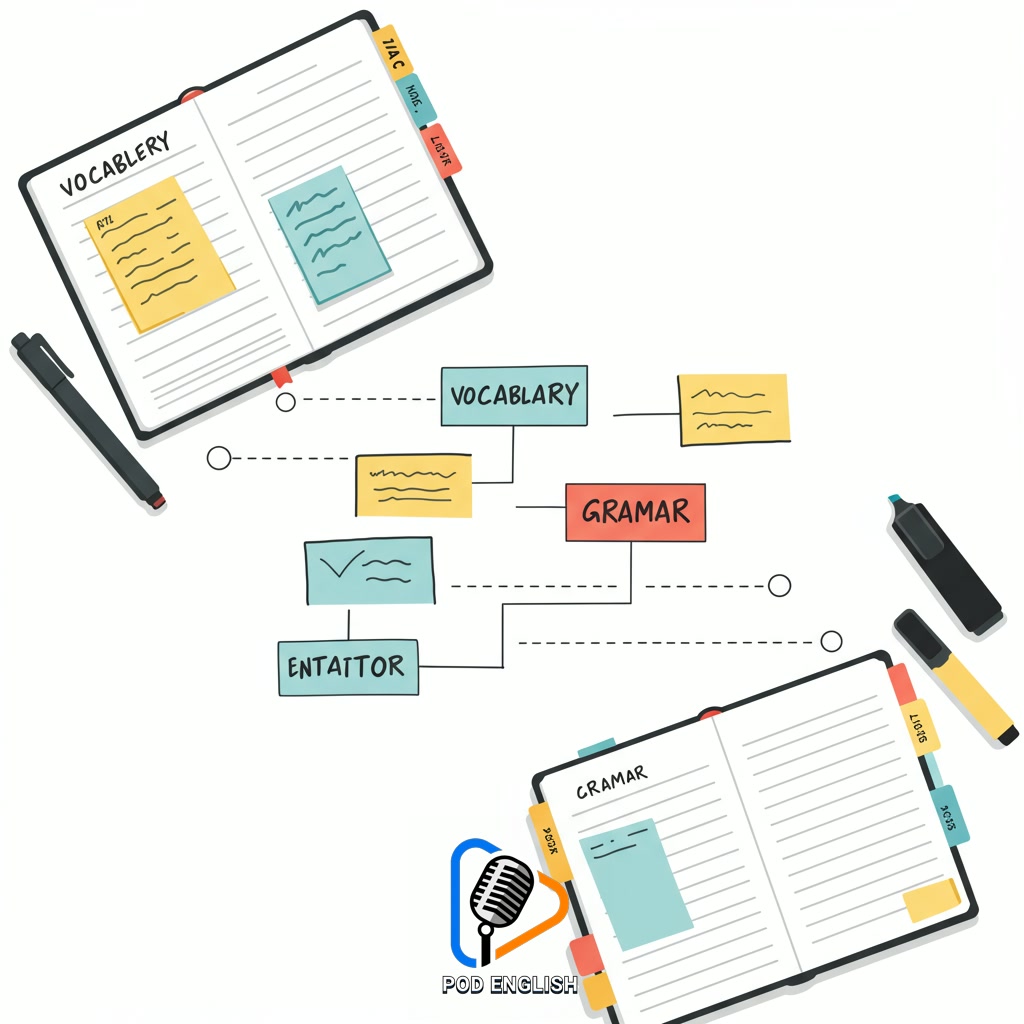
Practical Strategies for Organizing Your English Notes
Section 5: Leveraging Your Notes for Active Learning and Review
Having organized your English learning notes effectively, the next crucial step is to actively leverage them for reinforced learning and review. Your structured notes are not just a record; they are a powerful tool for practice and retention. Regularly reviewing your notes helps solidify vocabulary, grammar rules, and concepts in your long-term memory. Try techniques like summarizing sections in your own words, creating flashcards from key points, or using your notes as prompts for speaking practice. Engaging with your notes through active recall and application transforms passive information into usable knowledge, making your study sessions significantly more productive and boosting your overall English proficiency.

Leveraging Your Notes for Active Learning and Review
Section 6: Integrating Note-Taking into Your Daily Study Routine
Building upon having well-organized notes, the key to maximizing their benefit is consistent integration into your daily English study schedule. Don’t just file them away; make them an active part of your learning. This means dedicating specific time slots each day or week to review your notes. Perhaps you start your study session with a quick look at grammar rules you noted, or end by reviewing new vocabulary words. You could also use your notes as a reference while practicing speaking or writing. The goal is to make accessing and using your organized notes a natural habit, reinforcing what you’ve learned and identifying areas needing more attention. Regularly interacting with your notes transforms passive storage into active learning, significantly boosting your retention and fluency development.
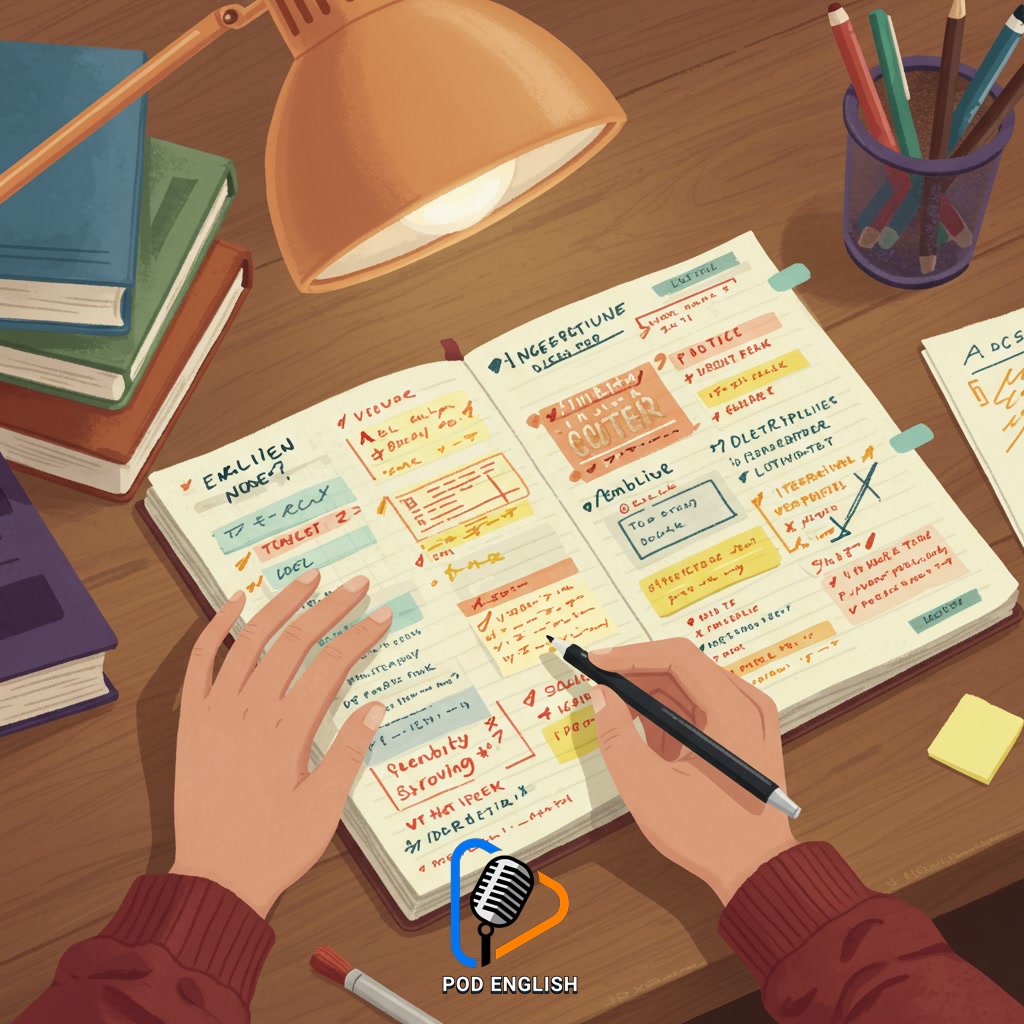
Integrating Note-Taking into Your Daily Study Routine













